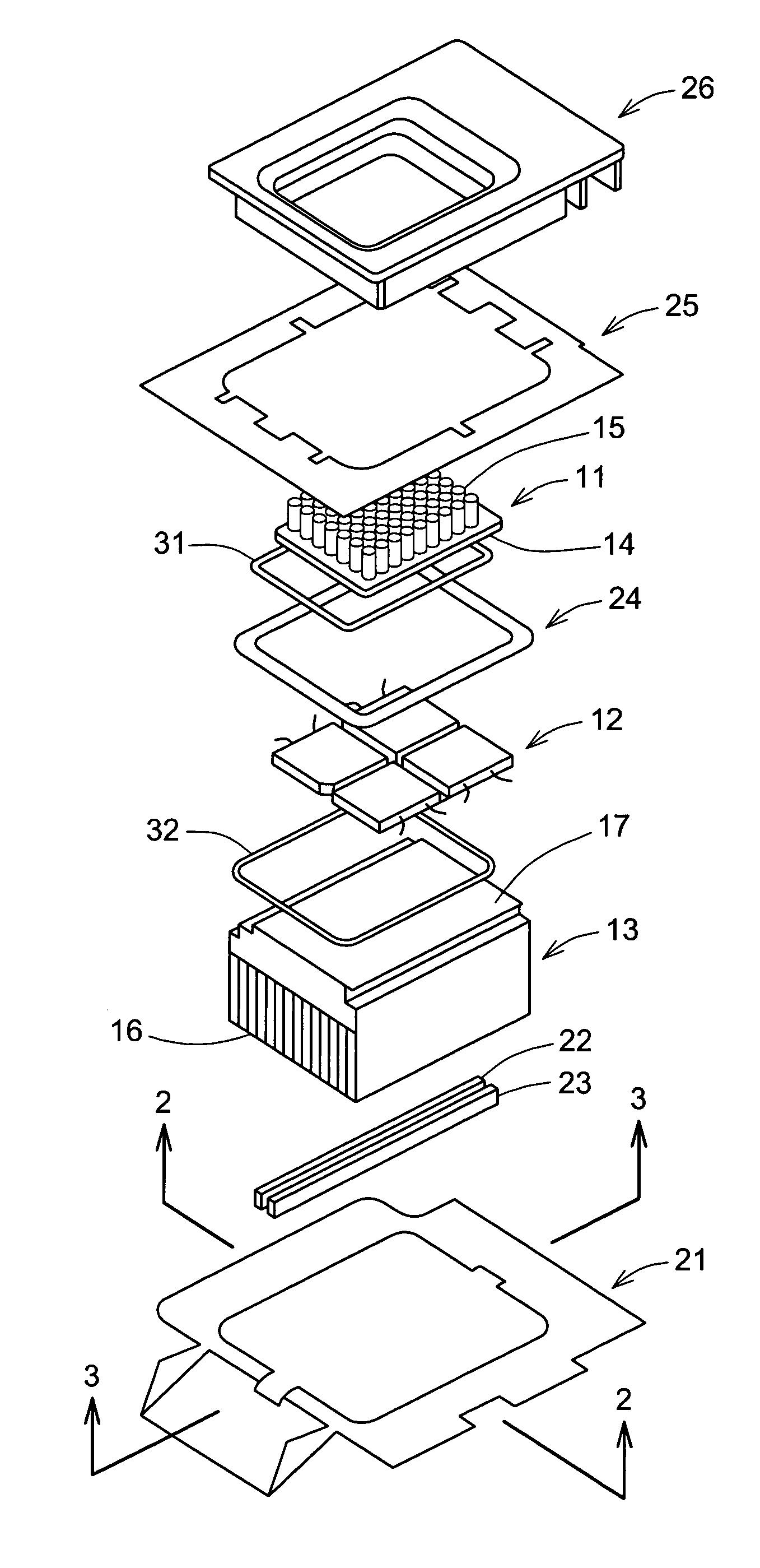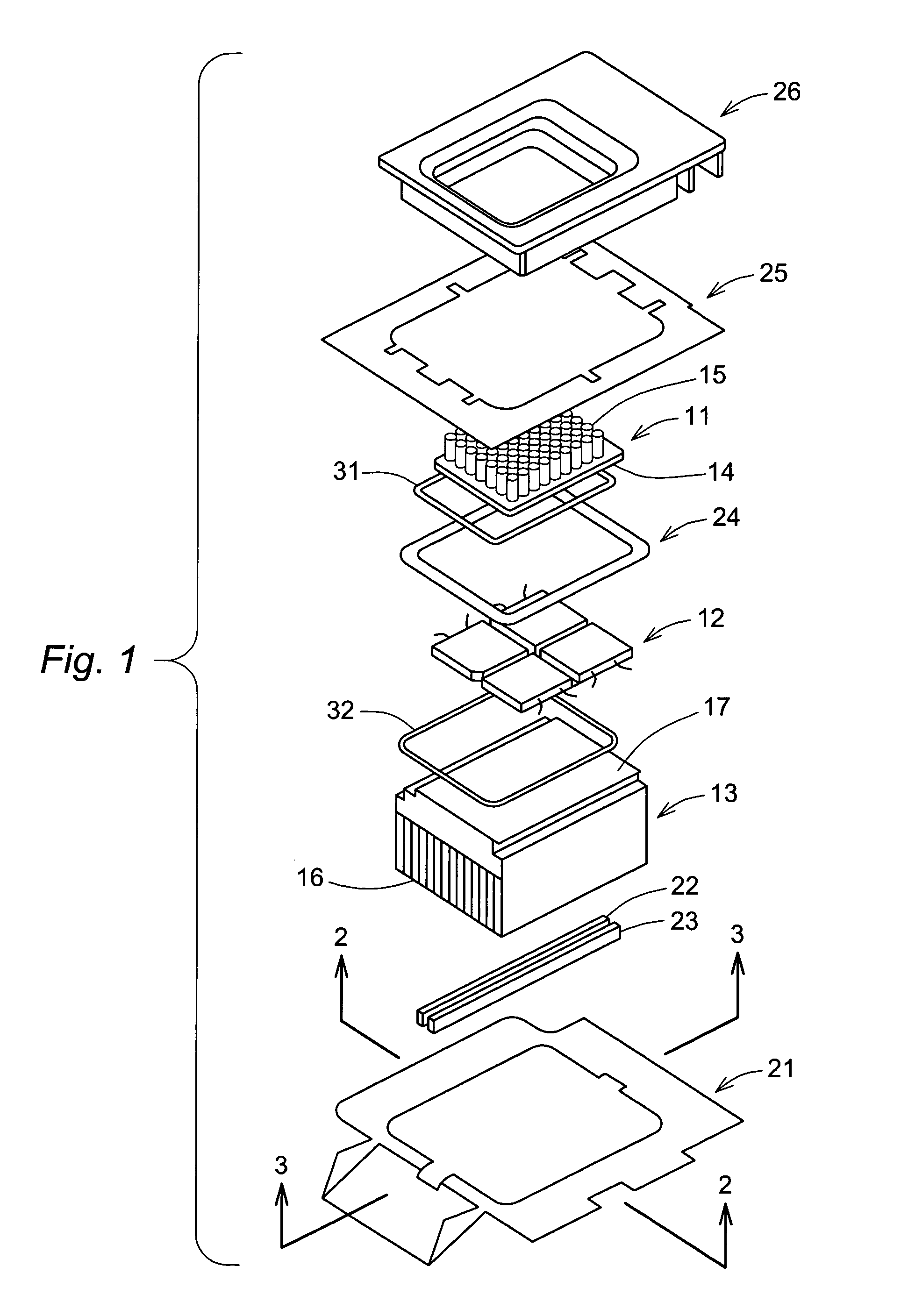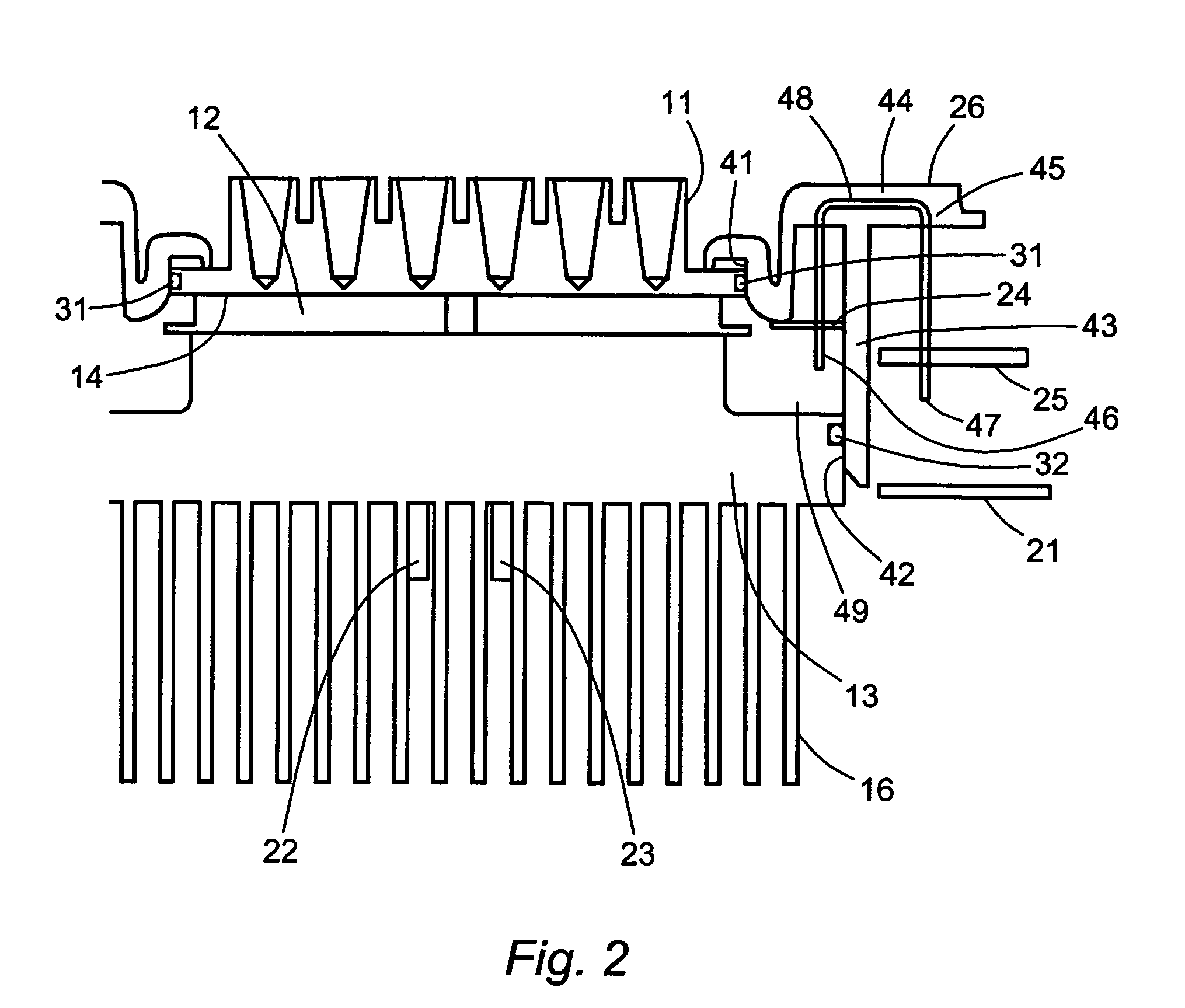Thermal cycler with protection from atmospheric moisture
a technology of atmospheric moisture and cycler, which is applied in the field of laboratory equipment, can solve the problems of affecting the mold mold, and condensation on the module surface, and achieves the effect of facilitating the molding of parts
- Summary
- Abstract
- Description
- Claims
- Application Information
AI Technical Summary
Benefits of technology
Problems solved by technology
Method used
Image
Examples
Embodiment Construction
[0014]Each of the several different aspects of the present invention is susceptible to a wide range of variation in terms of the configurations of each component, the arrangements of the components in the assembly, the particular instrument or apparatus in which they are incorporated, and the function that the instrument is designed to perform. A detailed review of one particular embodiment however will provide an understanding of the function and operation of the invention in each of its many embodiments. The figures hereto depict a thermal cycler for a PCR instrument as one such embodiment.
[0015]The components shown in the exploded perspective view of FIG. 1 include a sample block 11, thermoelectric modules 12, and a finned heat sink 13. These three components are shaped to allow them to be stacked in a configuration that places the broad faces on the upper and lower sides of the thermoelectric modules in thermal contact with the sample block and the heat sink, respectively. The t...
PUM
 Login to View More
Login to View More Abstract
Description
Claims
Application Information
 Login to View More
Login to View More - R&D
- Intellectual Property
- Life Sciences
- Materials
- Tech Scout
- Unparalleled Data Quality
- Higher Quality Content
- 60% Fewer Hallucinations
Browse by: Latest US Patents, China's latest patents, Technical Efficacy Thesaurus, Application Domain, Technology Topic, Popular Technical Reports.
© 2025 PatSnap. All rights reserved.Legal|Privacy policy|Modern Slavery Act Transparency Statement|Sitemap|About US| Contact US: help@patsnap.com



